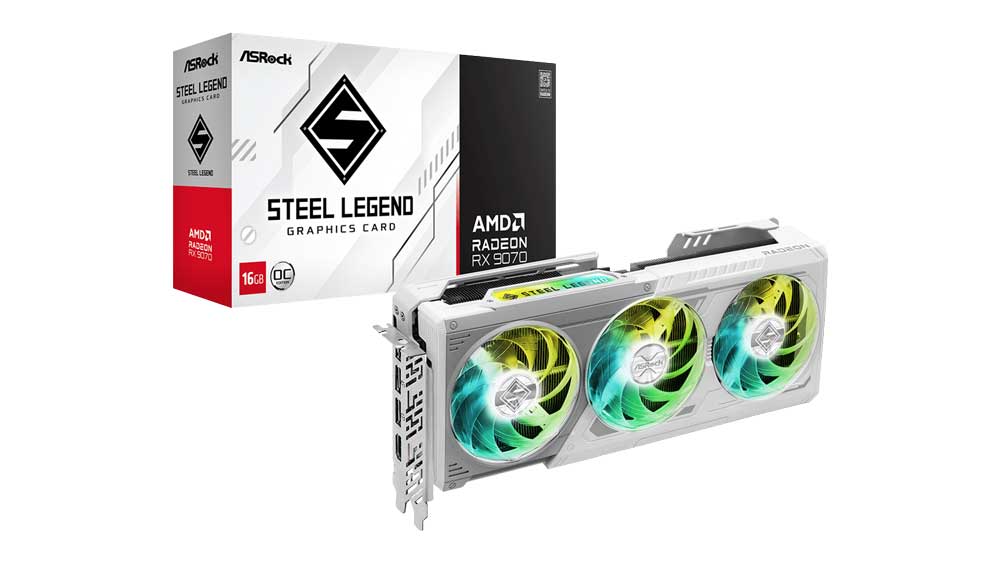Epilogue
While the RTX 5070 Ti uses the same GDDR7 RAM as the RTX 5080, it operates at a lower speed; hence, there is a 2 Gbps difference (28 vs 30). Still, it is easy to overclock it up to 34 Gbps, and there is also a large overclock room for the GPU. Thermals and power consumption are not affected notably, but the performance gain exceeded 11% in my case. It is the first time I write my epilogue mentioning the overclocking capabilities since this GPU has lots of potential without practically sacrificing anything in noise output and thermals. It seems NVIDIA didn’t want to make the performance gap between the RTX 5080 and RTX 5070 Ti smaller, but to keep a safe distance between these two products, to justify the $250 difference in price (MSRP prices always). Speaking of prices, good luck finding any RT 50 product at a regular price at the time of the review. Because of the limited stock and the increased demands, the prices of all RT 50 models went through the roof!
You should keep in mind that the PCIe 5.0 bus interface of the RTX 5070 Ti had compatibility issues with the PCIe expansion card that I use for Powenetics, while the RTX 5080 Ti worked fine. You should also take into account that most PCIe extension cables will probably have issues with PCIe 5.0 GPUs like the RT 50 and the Radeon RX 9000, and the only way to cope with this is to set the GPU’s PCIe bus to 4.0 through your mainboard’s BIOS. You won’t lose anything notable in performance, and you can use your PCIe extension cable(s) without issues.
| NVIDIA RTX 5070 Ti vs. Asus ROG Strix RTX 4080 OC Edition (FHD, QHD, UHD Combined) | |||
| Metric | FPS Improvement | FPS per Watt Improvement | |
| Raster | -5.22% | +6.21% | |
| +DLSS | -3.46% | +7.71% | |
| +RT | -6.51% | +2.21% | |
| +RT + DLSS | -6.23% | +2.71% | |
| +RT + DLSS + FG (2x) | +0.16% | +11.71% | |
| AVG: | -4.25% | +6.11% | |
The RTX 5070 Ti is close in overall performance to the RTX 4080 FE, which is around 3% lower overall than the top RTX 4080 model that I used for comparison purposes, the Asus ROG Strix OC Edition. The Galax 5070 Ti looks tiny compared to the monstrous Asus Rog Strix RTX 4080. Moreover, with DLSS 4.0 enabled, you get higher-quality graphics, and with the new Frame Generation modes (3x and 4x), which are only available in the RTX 50 cards, you can get way higher performance. However, most users call these frames “fake” and are unsatisfied. I partially agree; we need more pure horsepower from the GPUs rather than AI enhancements, which don’t affect the game’s response.
The graph below shows the significant differences between NVIDIA’s RTX generations. As you can see, MFG is only available for the RTX 50 line at the moment.
The other big news is the DLSS 4 Transformer model, which is not exclusive to the RTX 50 series but refers to all RTX lines. DLSS transformer models improve image quality with improved temporal stability, less ghosting, and greater detail in motion. There is a relatively small performance penalty, but as GPUs become more potent, we should focus more on quality than performance.
The following table reminds you of the differences between the RTX 50 series members.
| RTX 5090 | RTX 5080 | RTX 5070 Ti | RTX 5070 | |
| Architecture | GB202 | GB203 | GB203 | GB205 |
| Process Technology | TSMC 4N | TSMC 4N | TSMC 4N | TSMC 4N |
| Base Clock (MHz) | 2010 | 2300 | 2300 | 2160 |
| Boost Clock (MHz) | 2410 | 2620 | 2450 | 2510 |
| VRAM Size (GB) | 32 | 16 | 16 | 12 |
| VRAM Type | GDDR7 | GDDR7 | GDDR7 | GDDR7 |
| VRAM Speed (Gbps) | 28 | 30 | 28 | 28 |
| VRAM Bus Width (bit) | 512 | 256 | 256 | 192 |
| Transistors (Billions) | 92.2 | 45.6 | 45.6 | 31.0 |
| Shading Units | 21760 | 10752 | 8960 | 6144 |
| TMUs/Tensor Cores | 680 | 336 | 280 | 192 |
| ROPs | 192 | 128 | 96 | 64 |
| SM/RT Cores | 170 | 84 | 40 | 48 |
| TDP (W) | 575 | 360 | 300 | 250 |
| Launch Month/Year | 1/2025 | 1/2025 | 1/2025 | 1/2025 |
| MSRP ($) | 2000 | 1000 | 750 | 550 |
The GALAX GeForce RTX 5070 1-Click OC is a fine graphics card if you find it close to its MSRP price. Unfortunately, for the moment at least, this doesn’t seem to be the case, with most NVIDIA RTX 50 products sold at much higher prices than expected. Matching this graphics card with an ATX v3.1 PSU will be ideal, with the proper high-power cable, and avoid using adapters. You will find the best ATX v3.x PSUs in this article.
- Sells at MSRP ($750)
- Similar performance to RTX 4080 Super
- DLSS4 Frame Generation and Transformers Upscaling
- Compact dual-slot design
- Energy efficient
- Fan stop feature for lower noise output
- HDMI 2.1 and DP 2.1 support
- PCIe 5.0 support
- High-end hardware encoding acceleration
- Quiet Operation
- Overclocked from the factory (small margin)
- Notable overclock room
- Good cooling system
- Memory overclocking is limited by the driver
- High idle and multimedia power consumption
- Prologue & Technical specifications
- NVIDIA’s Key Technologies
- Box & Contents
- Part Analysis
- Specifications Comparison
- Test System
- Game Benchmark Details
- Raster Performance
- RT Performance
- RT Performance + DLSS/FSR Balanced
- Raytracing Performance + DLSS/FSR Balanced + FG
- DLSS/FSR Balanced (No RT)
- DLSS/FSR Balanced + FG (No RT)
- Relative Perf & Perf Per Watt (Raster)
- Relative Perf & Perf Per Watt (Raster + DLSS/FSR)
- Relative Perf & Perf Per Watt (RT)
- Relative Perf & Perf Per Watt (RT + DLSS/FSR)
- Relative Perf & Perf Per Watt (RT + DLSS/FSR + FG)
- Rendering Performance
- Operating Temperatures
- Operating Noise & Frequency Analysis
- Power Consumption
- Clock Speeds & Overclocking
- Cooling Performance
- Epilogue





Thanks for your detailed review. I bought a similar Galax card called the Blade OC in China. Despite putting it to the same settings as you in GPU tweak (and the GPU clock dial even going slightly higher to 2997) I’m finding that the max core clock I can get in TimeSpy Extreme GT1 is just under 3000MHz. Do you think this is just silicon lottery because my card seems to be about 3-5% behind every review of the Galax One click OC I can find (can’t read Chinese reviews of the local Blade OC version)?
Hi! OC is pure silicon lottery I am afraid.
OK. Cheers.